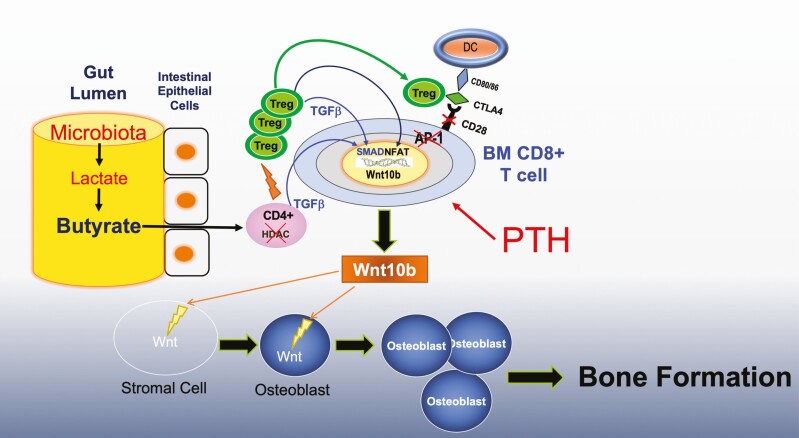Figure 2.
Diagrammatic representation of the mechanism of action of iPTH in bone. The intestinal microbiota produces butyrate via fermentation of complex carbohydrates. Intestinal butyrate diffuses through the intestinal wall into the systemic circulation, which carries it to distant organs. In the bone marrow (BM), butyrate enhances the differentiation of naïve helper CD4+ cells into regulatory T cells (Tregs) in concert with PTH. The expansion of BM Tregs makes possible for PTH to induce the production of wnt10b by BM CD8+ T cells. Wnt10b activates Wnt signaling in BM stromal cells, causing their proliferation and differentiation into osteoblasts. The expansion of the osteoblastic population results in increased bone formation and improved bone structure.

